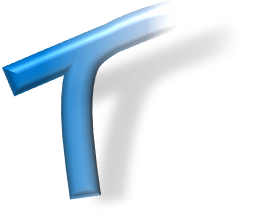Professeure Stéphanie Clarke, MD, PhD,
Cheffe de service de Neuropsychologie et de Neuroréhabilitation, Laboratoire des sciences cognitives, Centre Hospitalier Universitaire Vaudois (Lausanne -Suisse)
Professeur Arnaud Saj, neuropsychologue, PhD,
Professeur, Département de psychologie, Université de Montréal (Canada) ; Chercheur régulier au Centre de Recherche Interdisciplinaire en Réadaptation (Québec – Canada)
TRAJECTOIRES

L’équipe « Trajectoires » vous convie à un après-midi de conférences scientifiques, le jeudi 02 septembre 2021, à partir de 13h30.
- Présentation 1 : « Remodelling neural networks by prismatic adaptation » par
Professeure Stéphanie Clarke, MD, PhD
Cheffe de service de Neuropsychologie et de Neuroréhabilitation, Laboratoire des sciences cognitives, Centre Hospitalier Universitaire Vaudois (Lausanne -Suisse)
Résumé
The pioneering work of Yves Rossetti and his colleagues as well as the clinical investigations of Gilles Rode and his colleagues opened a new chapter in the rehabilitation of cognitive functions. A relatively simple intervention – a brief exposure to prismatic adaptation – was shown to alleviate left unilateral neglect and a series of other, partially related clinical conditions.
In the aftermath of this important discovery, several groups investigated the effects of prismatic adaptation on specific tasks and on the underlying neural networks, adding evidence that changes in brain organization indeed occur.
In recent years, however, large clinical studies appeared to cast doubts on the efficacy of prismatic adaptation in neglect.
In my talk I will examine the evidence, from our work and from that of others, as to the neural mechanisms of prismatic adaptation. I will argue that understanding these mechanisms helps us to identify profiles of patients who will respond positively to prismatic adaptation and those who will not. This understanding is quintessential for designing new large-scale clinical studies.
Selected publications of our group:
Crottaz-Herbette S, Fornari E, Clarke S (2014) Prismatic adaptation changes visuospatial representation in the inferior parietal lobule. Journal of Neuroscience 34: 11803-11
Tissieres I, Elamly M, Clarke S, Crottaz-Herbette S (2017) For better or worse: The effect of prismatic adaptation on auditory neglect. Neural Plasticity, Volume 2017, Article ID 8721240.
Crottaz-Herbette S, Fornari E, Notter MP, Bindschaedler C, Manzoni L, Clarke S (2017) Reshaping the brain after stroke: The effect of prismatic adaptation in patients with right brain damage. Neuropsychologia, 104, 54–63.
Crottaz-Herbette S, Fornari E, Tissieres I, Clarke S (2017) A brief exposure to leftward prismatic adaptation enhances the representation of the ipsilateral, right visual field in the right inferior parietal lobule. eNeuro, DOI: 10.1523/ENEURO.0310-17.2017.
Tissieres I, Fornari E, Clarke S, Crottaz-Herbette S (2018) Supramodal effect of rightward prismatic adaptation on spatial representation within the ventral attentional system. Brain Structure and Function, 223, 1459-1471
Tissieres I, Crottaz-Herbette S, Clarke S, (2018) Exploring auditory neglect: anatomo-clinical correlations of auditory extinction. The Annals of Physical and Rehabilitation Medicine, in press
Crottaz-Herbette S, Tissieres, I, Fornari E, Clarke S, (2019) Remodelling the attentional system after left hemispheric stroke: Effect of leftward prismatic adaptation. Cortex, 115:43-55
Wilf M, Serino A, Clarke S, Crottaz-Herbette S (2019) Prism adaptation enhances decoupling between the default mode network and the attentional networks. NeuroImage 200:210-220
Gudmundsson L, Vohryzek J, Fornari E, Clarke S, Hagmann P, Crottaz-Herbette s (2020) A brief exposure to rightward prismatic adaptation changes resting-state network characteristics of the ventral attentional system. PLOS One, doi.org/10.1371/journal.pone.0234382
- Présentation 2 : « Rééducation de la négligence spatiale : Mythe ou Réalité ? » par
Professeur Arnaud Saj, neuropsychologue, PhD
Professeur, Département de psychologie, Université de Montréal (Canada) ; Chercheur régulier au Centre de Recherche Interdisciplinaire en Réadaptation (Québec – Canada)
Résumé
La négligence, voire les négligences, a fait l’objet de nombreux travaux et de propositions de rééducation au cours des dernières décennies. Passant de la stimulation visuelle, auditive ou le simple encouragement à des stimulations plus novatrices, comme les stimulations vestibulaires ou prismatiques, et plus récemment la stimulation magnétique transcrânienne (rTMS) ou à courant continue (tDCS), l’ensemble de ces outils thérapeutique, en dehors de leur efficacité, ont un point commun, le patient n’est pas acteur direct de sa prise en charge. Plus récemment, l’apport de la neuro-imagerie a permis de mieux comprendre les enjeux et les effets de ces interventions, notamment l’adaptation prismatique, et notamment de mieux cibler les interventions en fonction des caractéristiques du patient. Ces deux éléments, l’implication direct du patient et la neuro-imagerie ont permis le développement de nouvelles prises en charge des patients, notamment avec l’utilisation du neurofeedback, en IRM et en EEG. L’objectif de la présentation est de montrer que ces derniers outils d’intervention peuvent être implantés dans les services de rééducation mais aussi au domicile du patient.
Chaque présentation durera 30 minutes, et sera suivie par 15 minutes de questions-réponses.
Lieu : Amphithéâtre du Neurocampus
Contact : Aurélien Hugues - huguesaurelien@gmail.com
CRNL - CH Le Vinatier - Bâtiment 462 Neurocampus Michel Jouvet - Amphithéâtre











